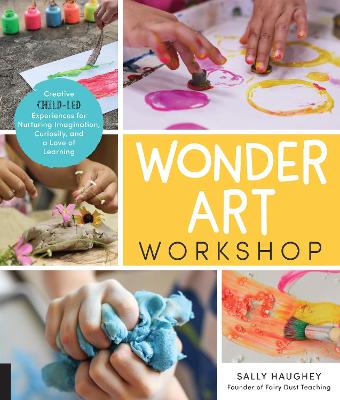Reviewed by annieb123 on
Wonder Art Workshop is a tutorial and resource guide aimed at children and their parents/teachers/caregivers. Due out 12th Nov 2019 from Quarto on their Quarry imprint, it's 160 pages and will be available in flexibound and ebook formats.
This book is full of child led creative experimentation and learning activities. The introduction gives a short overview and definitions of child led learning, the benefits of the methodology, and some practical tips for implementation and guidance.
The following chapters describe how to set up a creative space, tools, supplies, safety, observation and objectivity, giving guidance, collecting materials (parts, as the book refers to them), and other background info aimed at the adult facilitators. The next three chapters include 25 workshop tutorial projects such as making (and using) chalk paints, spaceships from old CDs, magic lanterns, lots of painting projects, etc. Interwoven in the tutorials are good solid pieces of advice for helping children unlock and access their creativity, problem-solving, and more. The book also includes an abbreviated links and resources list as well as art display tips, a short author bio and a good index.
The photography is abundant, clear, illustrative, and attractive. The typesetting is easy-to-read and the graphics are attention grabbing and colorful and suit the projects well.
This would make a great book for parents, caregivers, library activity coordinators, teachers, and such. I can also see this book being a good support text and resource guide for students majoring in teaching/art/therapy fields.
Four stars.
Disclosure: I received an ARC at no cost from the author/publisher for review purposes.
Reading updates
- Started reading
- Finished reading
- 10 November, 2019: Reviewed
